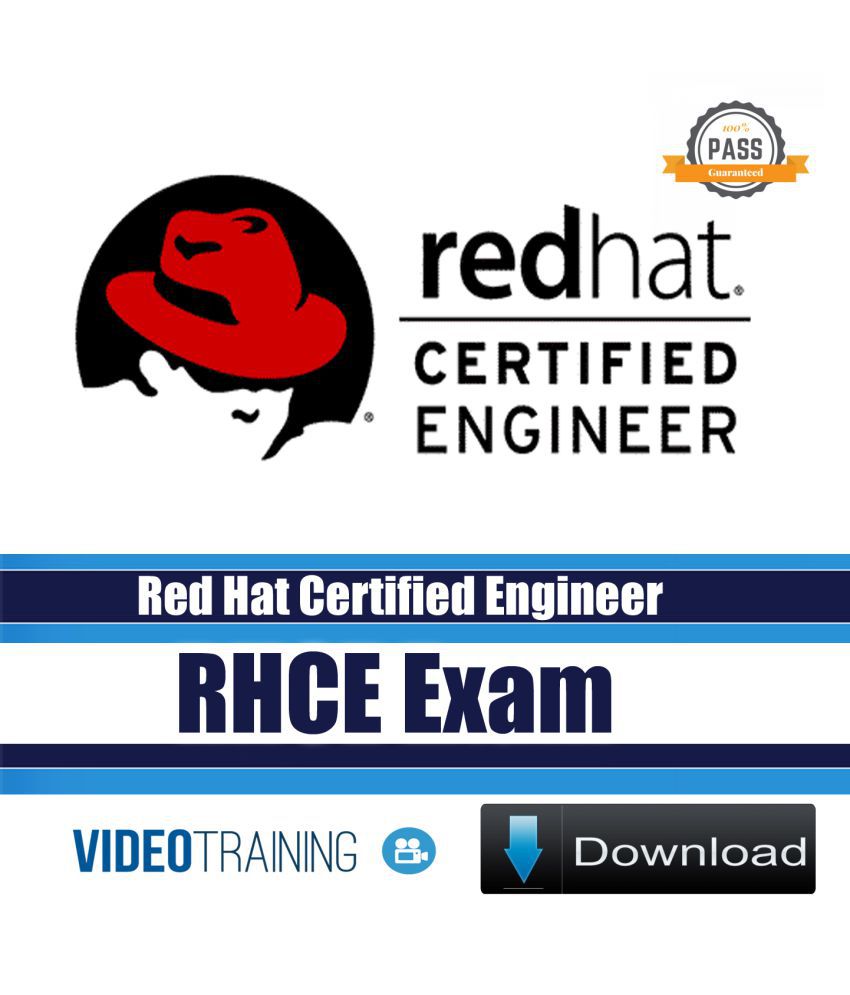Duration : 8 hours 18 minutes Table of Contents I: Course Introduction II: What to Expect on the RHCE Exam III: Preparing an Environment for Doing Exercises Module 1: Advanced System Management Lesson 1: Configuring Authentication 1.1: Understanding Red Hat Identity Management 1.2: Using authconfig to set up External Authentication 1.3: Configuring a System to Authenticate Using Kerberos 1.4: Understanding authconfig Configuration Files Exercise 1 Explanation to Exercise 1 Interactive Exercise — Module 1, Lesson 1 Lesson 2: Configuring iSCSI Target and Initiator 2.1: Understanding iSCSI Target and Initiator 2.2: Setting up an iSCSI Target 2.3: Connecting the iSCSI Initiator to an iSCSI SAN 2.4: Verifying the iSCSI Connection Exercise 2 Explanation to Exercise 2 Interactive Exercise — Module 1, Lesson 2 Lesson 3: System Performance Reporting 3.1: Understanding System Performance Parameters 3.2: Understanding top 3.3: Understanding iostat 3.4: Understanding vmstat 3.5: Understanding sar Components 3.6: Setting up sar 3.7: Analyzing sar Data Exercise 3 Explanation to Exercise 3 Lesson 4: System Optimization Basics 4.1: Understanding the /proc Contents 4.2: Analyzing the /proc File System 4.3: Optimizing Through /proc 4.4: Introducing sysctl 4.5: Using sysctl 4.6: Modifying Network Behavior Through /proc and sysctl Exercise 4 Explanation to Exercise 4 Lesson 5: Configuring Logging 5.1: Understanding Logging in RHEL7 5.2: Connecting Journald to Rsyslog 5.3: Setting up Remote Logging Exercise 5 Explanation to Exercise 5 End-of-Module Questions Module 2: Networking and Apache Lesson 6: Configuring Advanced Networking 6.1: Networking Basics Resumed 6.2: Understanding Routing 6.3: Setting up Static Routing 6.4: Understanding Network Bridges 6.5: Setting up Network Bridges 6.6: Understanding Network Bonds and Teams 6.7: Configuring Network Teams 6.8: Configuring IPv6 Exercise 6 Explanation to Exercise 6 Interactive Exercise — Module 2, Lesson 6 Lesson 7: Managing Linux-Based Firewalls 7.1: Understanding Firewalld Operation 7.2: Configuring Firewalld Services and Zones 7.3: Creating Services Files 7.4: Configuring Rich Firewall Rules 7.5: Understanding NAT and Port Forwarding 7.6: Configuring NAT 7.7: Configuring Port Forwarding Exercise 7 Explanation to Exercise 7 Interactive Exercise — Module 2, Lesson 7 Lesson 8: Configuring Apache Virtual Hosts 8.1: Understanding Apache Configuration Files 8.2: Exploring the httpd.conf File 8.3: Configuring a Simple Web Server 8.4: Introducing Virtual Hosts 8.5: Configuring Virtual Hosts 8.6: Common Errors Working with Virtual Hosts Exercise 8 Explanation to Exercise 8 Interactive Exercise — Module 2, Lesson 8 Lesson 9: Managing Advanced Apache Features 9.1: Setting up Authenticated Web Servers 9.2: Configuring Apache for LDAP Authentication 9.3: Enabling CGI Scripts 9.4: Understanding TLS Protected Web Sites 9.5: Setting up TLS Protected Web Sites Exercise 9 Explanation to Exercise 9 End-of-Module Questions Module 3: DNS and File Sharing Lesson 10: Configuring a Cache-only DNS Server 10.1: Understanding DNS 10.2: Understanding Different DNS Server Modes 10.3: Analyzing DNS Output with dig 10.4: Setting up a Cache-only DNS Nameserver 10.5: Opening the Firewall for DNS 10.6: Working with Cache Dumps Exercise 10 Explanation to Exercise 10 Interactive Exercise — Module 3, Lesson 10 Lesson 11: Configuring NFS File Sharing 11.1: Understanding NFSv4 Features 11.2: Configuring NFS Exports Suitable for Group Collaboration 11.3: Mounting NFS Shares 11.4: Using Kerberos to Control Access to NFS Network Shares–Part 1 11.5: Using Kerberos to Control Access to NFS Network Shares–Part 2 11.6: Opening the Firewall for NFS 11.7: Understanding showmount and NFSv4 11.8: Understanding NFS SELinux Configuration Exercise 11 Explanation to Exercise 11 Lesson 12: Managing SMB File Sharing 12.1: Accessing SMB Shares 12.2: Samba Server Configuration Overview 12.3: Creating the SMB Share: Linux Tasks 12.4: Creating the SMB Share: smb.conf Tasks 12.5: Tuning the Share for Access Restrictions 12.6: Verifying the Configuration 12.7: Using Samba-Related SELinux Settings 12.8: Opening the Firewall for SMB Traffic Exercise 12 Explanation to Exercise 12 Interactive Exercise — Module 3, Lesson 12 End-of-Module Questions Module 4: Essential Back-end Services Lesson 13: Setting up an SMTP Server 13.1: Understanding Server Roles in Email 13.2: Understanding Postfix Configuration 13.3: Configuring Postfix for Mail Reception 13.4: Configuring Postfix for Relaying Mail 13.5: Demonstration: Monitoring a Working Mail Configuration 13.6: Understanding Postfix Maps Exercise 13 Explanation to Exercise 13 Interactive Exercise — Module 4, Lesson 13 Lesson 14: Managing SSH 14.1: Understanding Secure SSH Authentication 14.2: Configuring Key-based Authentication 14.3: Understanding Important SSH Options 14.4: Tuning SSH Client Options 14.5: Understanding the Use of SSH Tunnels 14.6: Creating SSH Tunnels Exercise 14 Explanation to Exercise 14 Lesson 15: Managing MariaDB 15.1: Understanding Relational Databases 15.2: Creating a Base MariaDB Configuration 15.3: Creating Databases and Tables 15.4: Managing Users and Permissions 15.5: Backing up the Database Exercise 15 Explanation to Exercise 15 Interactive Exercise — Module 4, Lesson 15 Lesson 16: Managing Time Services 16.1: Understanding RHEL7 Time Services 16.2: Configuring NTP Peers Exercise 16 Explanation to Exercise 16 Lesson 17: Shell Scripting 17.1: Understanding Shell Scripting Core Elements 17.2: Using Variables 17.3: Using Positional Parameters 17.4: Understanding if then else 17.5: Understanding for 17.6: Understanding while and until 17.7: Understanding case Exercise 17 Explanation to Exercise 17 End-of-Module Questions

